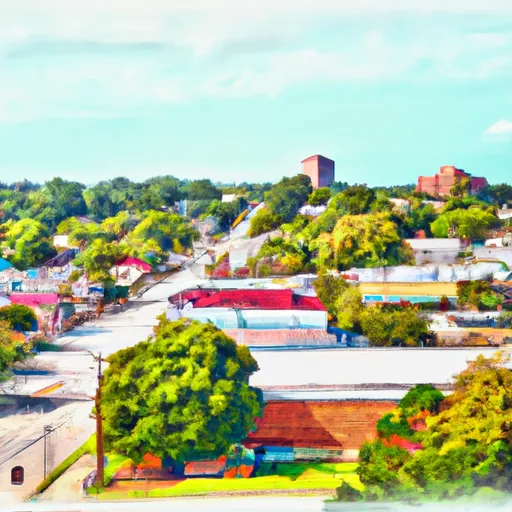-
 Snoflo Premium
Snoflo Premium
Get unlimited access to all our content
With no Ad interruptions! - Start Your Free Trial Login with existing account
Hortense
Eden Index
Climate
7.8
•
Recreation
0.6
•
Community
•
Safeguard
3.3/10

Hortense is a small town located in Brantley County, Georgia. The town experiences a humid subtropical climate, characterized by hot and humid summers and mild winters. Summers in Hortense are typically hot with temperatures ranging from the mid-80s to mid-90s Fahrenheit, while winters are mild with temperatures averaging in the 40s to 60s Fahrenheit.
Hydrologically, Hortense benefits from its proximity to the Satilla River, which offers various recreational opportunities. The river is popular among locals and visitors for kayaking, canoeing, and fishing. Anglers can expect to catch a variety of fish species, including bass, catfish, and bream.
In addition to the Satilla River, Hortense boasts several outdoor recreation opportunities. The region is home to vast forests and natural areas, perfect for hiking, birdwatching, and wildlife observation. The nearby Okefenokee National Wildlife Refuge is a popular destination for nature enthusiasts, offering opportunities for boating, camping, and exploring the unique wetland ecosystem.
Overall, Hortense, Georgia offers a pleasant climate, easy access to the Satilla River, and a range of outdoor recreational activities for residents and visitors alike.
What is the Eden Index?
The Snoflo Eden Index serves as a comprehensive rating system for regions, evaluating their desirability through a holistic assessment of climate health, outdoor recreation opportunities, and natural disaster risk, acknowledging the profound impact of these factors on livability and well-being.
Climate Health Indicator (CHI): 7.8
Hortense receives approximately
1322mm of rain per year,
with humidity levels near 85%
and air temperatures averaging around
19°C.
Hortense has a plant hardyness factor of
8, meaning
plants and agriculture in this region tend to thrive here all year round.
By considering the ideal temperature range, reliable water supplies, clean air, and stable seasonal rain or snowpacks, the Climate Health Indicator (CHI) underscores the significance of a healthy climate as the foundation for quality living.
A healthy climate is paramount for ensuring a high quality of life and livability in a region, fostering both physical well-being and environmental harmony. This can be characterized by ideal temperatures, reliable access to water supplies, clean air, and consistent seasonal rain or snowpacks.
Weather Forecast
Streamflow Conditions
St. Marys - Satilla
Area Rivers
St. Marys - Satilla
Snowpack Depths
St. Marys - Satilla
Reservoir Storage Capacity
St. Marys - Satilla
Groundwater Levels
Recreational Opportunity Index (ROI): 0.6
The Recreational Opportunity Index (ROI) recognizes the value of outdoor recreational options, such as parks, hiking trails, camping sites, and fishing spots, while acknowledging that climate plays a pivotal role in ensuring the comfort and consistency of these experiences.
Access to outdoor recreational opportunities, encompassing activities such as parks, hiking, camping, and fishing, is crucial for overall well-being, and the climate plays a pivotal role in enabling and enhancing these experiences, ensuring that individuals can engage in nature-based activities comfortably and consistently.
Camping Areas
| Campground | Campsites | Reservations | Toilets | Showers | Elevation |
|---|---|---|---|---|---|
| Jacksonville NAS RV Military | None | 20 ft | |||
| Camp Blanding RV Military | None | 185 ft | |||
| Mike Roess Gold Head State Park | None | 216 ft | |||
| Traders Hill County Park | None | 85 ft |
Catastrophe Safeguard Index (CSI):
The Catastrophe Safeguard Index (CSI) recognizes that natural disaster risk, encompassing floods, fires, hurricanes, and tornadoes, can drastically affect safety and the overall appeal of an area.
The level of natural disaster risk in a region significantly affects safety and the overall livability, with climate change amplifying these risks by potentially increasing the frequency and intensity of events like floods, fires, hurricanes, and tornadoes, thereby posing substantial challenges to community resilience and well-being.
Community Resilience Indicator (CRI):
The Community Resilience Indicator (CRI) recognizes that education, healthcare, and socioeconomics are crucial to the well-being of a region. The CRI acknowledges the profound impact of these elements on residents' overall quality of life. By evaluating educational resources, healthcare accessibility, and economic inclusivity, the index captures the essential aspects that contribute to a thriving community, fostering resident satisfaction, equity, and social cohesion.

